Baby Paradox Albino Red Ear Slider Turtle
$999.99
- Trachemys scripta elegans
- Captive Bred
- Approximately 2 – 2.5 Inches In Shell Length
- Adults Will Average In Sizes Of 10+ Inches
- Voracious Feeders Devouring Pellets, Krill, Crickets, And Greens
Description
WE HAVE PARADOX ALBINO RED EAR SLIDER TURTLES FOR SALE. HERE ARE SOME HIGHLIGHTS:
- Trachemys scripta elegans
- Captive Bred
- Approximately 2 – 2.5 Inches In Shell Length
- Adults Will Average In Sizes Of 10+ Inches
- Voracious Feeders Devouring Pellets, Krill, Crickets, And Greens
FUN FACTS!
- The Amazing Colors On This Rare Animal Will Keep You Intrigued For The Long Term
- Originating From Northern And Central America Ranging From The East Coast To Texas From Illinois To The Gulf Of Mexico
- Wide Ranging Turtle Living In A Variety Of Climates But Sticking To Slow Moving Rivers, Humid Habitats, And Hot Temperatures
- With Proper Care These Can Live 20+ Years In Captivity
Although Paradox Albinos are unrelated to Snows, Leubinos, Caramels, and Charcoals, consider what you could create by combining their genes! As adults, they are yellow/white or lime, with a few to many black Pinto-like blotches all over them – a few even have normal traces of green markings – like random droplets of paint on a canvas – each is one-of-a-kind – and bizarre to look at…
As hatchlings, this new morph’s eyes have the same blue iris as a Caramel, but a very large, brilliant red pupil – more like a Snow – indicating that their mutation is a form of albinism…
When hatchlings close their eyes, the glowing red pupil and iris are plainly visible through their eyelids, almost as if their eyes were still open (as adults, their eyes darken, but they always exhibit albino red in sunlight). The heads, limbs, and skin of hatchlings are extremely transparent, and under a gentle 40-watt light, their soft parts literally glow (see the photo on top). When they hatch, their shells and skin are soft yellow and light pink; after a few weeks, fully defined patterns develop, and some even have traces of blue/black or green pigment randomly appear on their carapaces and plastrons (Paradox), indicating that they have even more genetic options in their tool belts. As they mature, they develop small to large black – and occasionally normal green – markings all over their shells and epidermis; some even acquire a lime albino hue…
There have now been several first breedings with non-Paradox RES that have produced hatching Paradox – so the gene is clearly dominant.

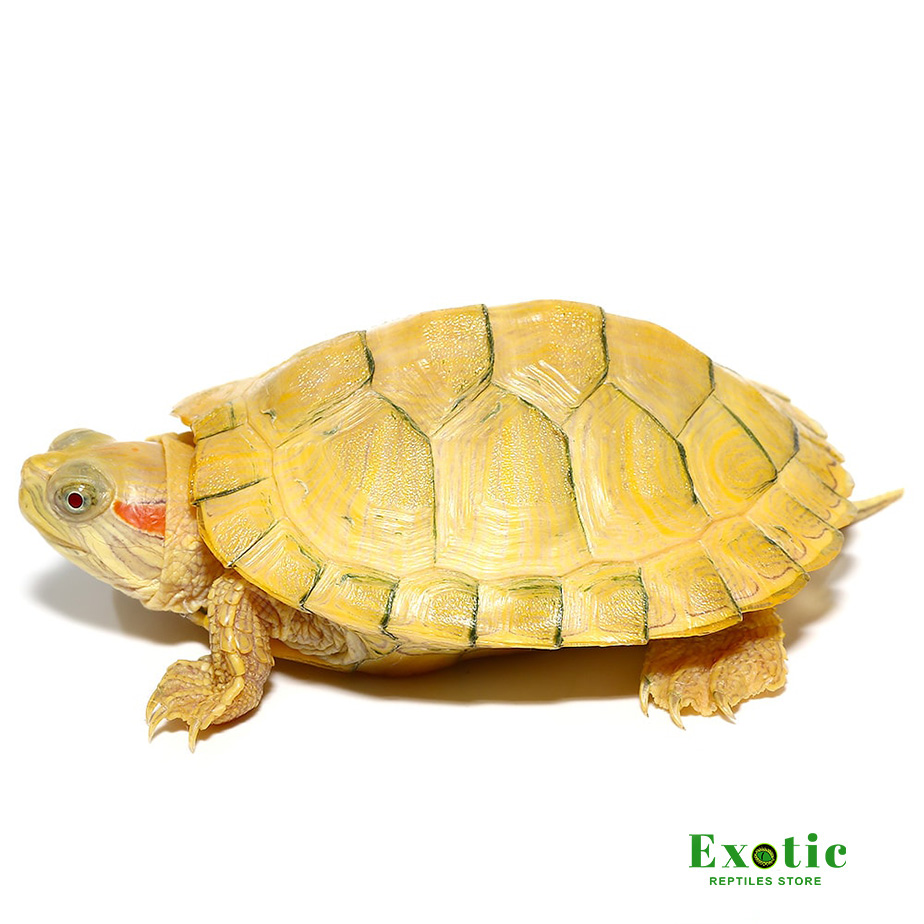
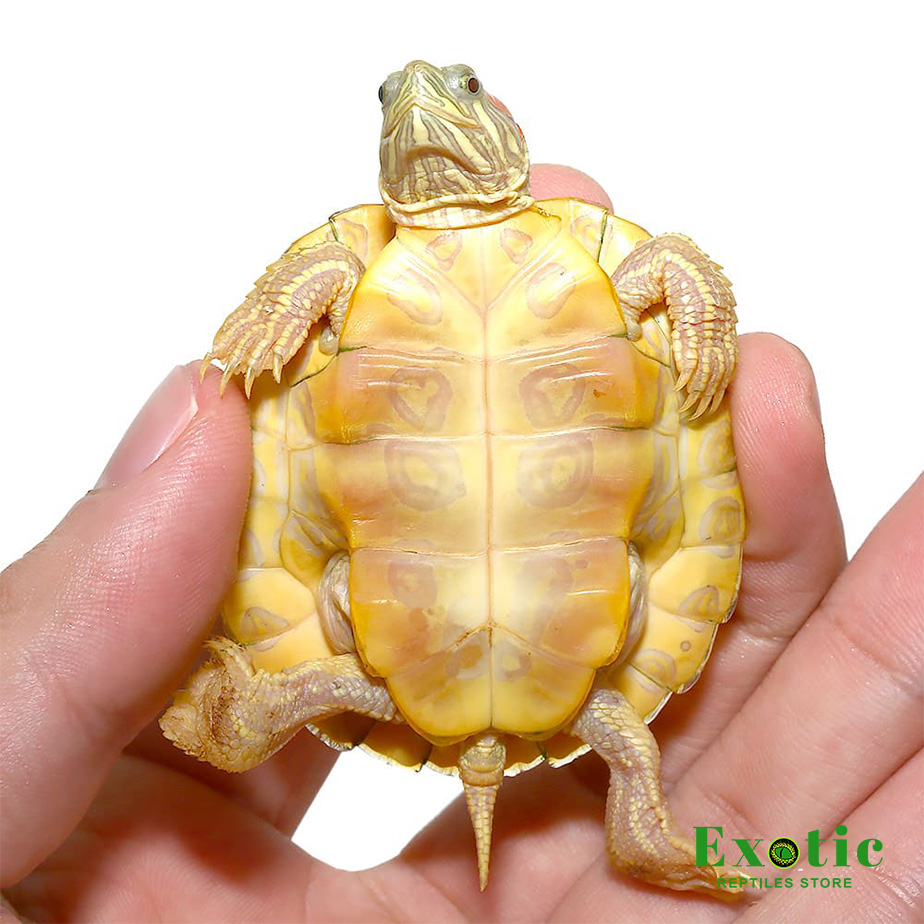
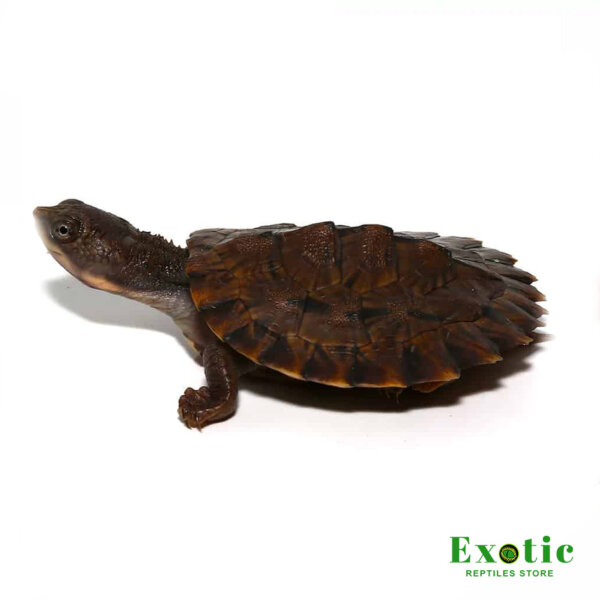

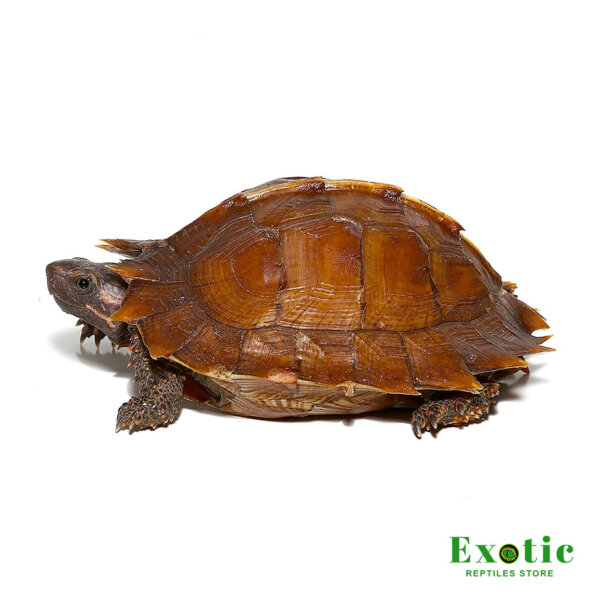
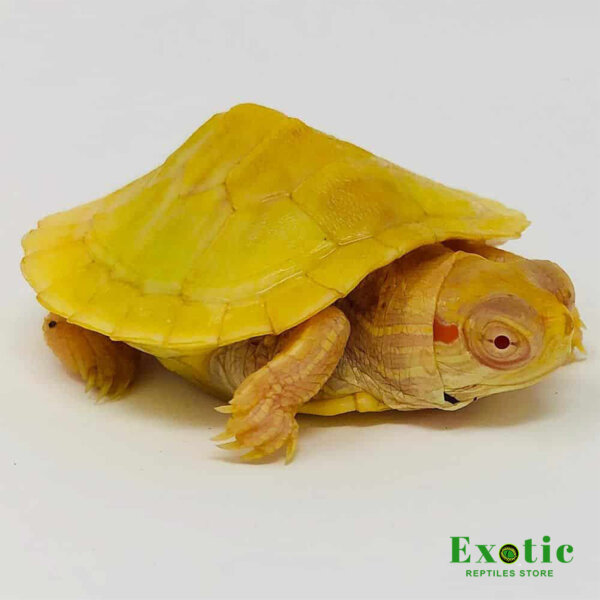
Reviews
There are no reviews yet.